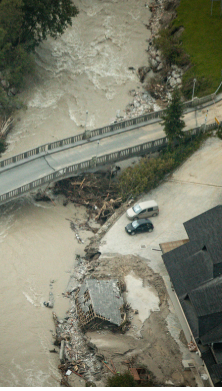Political risks and violence returns to the top 10 of the Allianz Risk Barometer for the first time since 2018, reflecting the fact that civil unrest incidents such as protests and riots now challenge terrorism as the main political risk exposure for companies. The number, scale and duration of many recent events has been exceptional, such as the “yellow vest” protests in France (insured losses around $90mn), as well as unrest in locations like Hong Kong ($77mn), Chile (about $2bn) and Ecuador ($821mn).
Meanwhile, in the US, a tense second half of 2020 saw racially charged riots in the wake of the death of George Floyd and the rise of the Black Lives Matter movement, as well as further unrest around the US presidential election, including a mob storming the US Capitol. This has resulted in the US seeing its standing on the Verisk Maplecroft Civil Unrest Index sharply deteriorate – from the 91st riskiest jurisdiction in Q2 2020 to the 34th by Q4 2020[1].
In addition, anti-lockdown demonstrations turned violent in several Western countries and while these incidents did not create a sizeable magnitude of insured losses, they have clearly brought the political violence topic back into focus for risk managers. Businesses do not have to be direct victims of civil unrest or terrorism to suffer financial losses. Revenues can suffer whether or not physical damage happens if the surrounding area is cordoned off for a prolonged time or while infrastructure is repaired to allow re-entry of customers, vendors and suppliers. Companies can also be hit by a physical loss of attraction to a property nearby. If there is a closure of a location where large numbers of people come together, a reduced number of visitors will result.

The outlook doesn’t get any rosier. As the socioeconomic fallout from Covid-19 mounts, the ranks of global protesters is expected to swell – 75 countries will likely experience an increase in protests by late 2022, according to Verisk Maplecroft. Of these, more than 30 – predominantly in Europe and the Americas – will likely see significant activity.
“The current state of the world – Covid-19, the economic downturn, a general rise towards nationalism, authoritarianism and separatism, declining multi-lateral problem-solving approaches, erosion of democratic core values, the emergence of ‘post-factual’ world views and intensifying distrust between China and the West – represent a perfect storm,” says Bjoern Reusswig, Head of Global Political Violence and Hostile Environment Solutions at AGCS. “This is exacerbated by the fact that the world has never been so interconnected by goods, services and the ability for more people to travel globally. A cursory look at the “doomsday clock”, which has been maintained since 1947 by the Bulletin of Atomic Scientists and symbolically represents the likelihood of a man-made global catastrophe, shows it has never been closer to midnight than in 2020 – it is currently 11:58:20 [2].”
Civil unrest/commotion and separatism/nationalism issues will remain among the main political violence topics going forward. The pandemic has led to some countries taking tougher stances on refugees/asylum seekers and cutting back on development, creating worse conditions for emerging countries. At the same time, debt and currency crises will continue in developing economies. Such conditions only further fuel incidences of separatism/ nationalism, religious extremism and xenophobia.
It is little surprise then that interest in the specialist political violence and terrorism (PVT) insurance market is growing. Overall, capacity increased to over $3.2bn notional capacity per transaction for contract frustration (non-performance by government obligors) and $3.3bn for political risks in 2020 according to Willis Towers Watson [3]. While the specialized PVT market took some hits during 2020, the majority of insured losses were absorbed by the property all-risk (PAR) market – creating a new dimension of awareness in these markets. The global economic downturn has had a more significant impact on the PVT market. Ironically, although awareness of politically motivated threats is increasing, due to budget restraints, many companies have reduced their purchase of PVT products, or stopped altogether, which may be shortsighted.
“Insurers and brokers need to explain the inherent benefits of their products to customers, especially on the differences between PAR and PVT,” says Reusswig. “In the wake of the US riots, the trend of the PAR market taking a tougher stance on strike, riot and civil commotion exposure will likely accelerate and capacities will likely move from PAR to the specialist political violence insurance markets.”
[1] Verisk Perspectives, A Dangerous New Era Of Civil Unrest Is Dawning In The United States And Around The World, December 10, 2020
[2] Bulletin Of The Atomic Scientists, Closer Than Ever: It Is 100 Seconds To Midnight, January 23, 2020
[3] Willis Towers Watson, Insurance Marketplace Realities 2021 – Political Risk, November 18, 2020
Pictures: Adobe Stock















